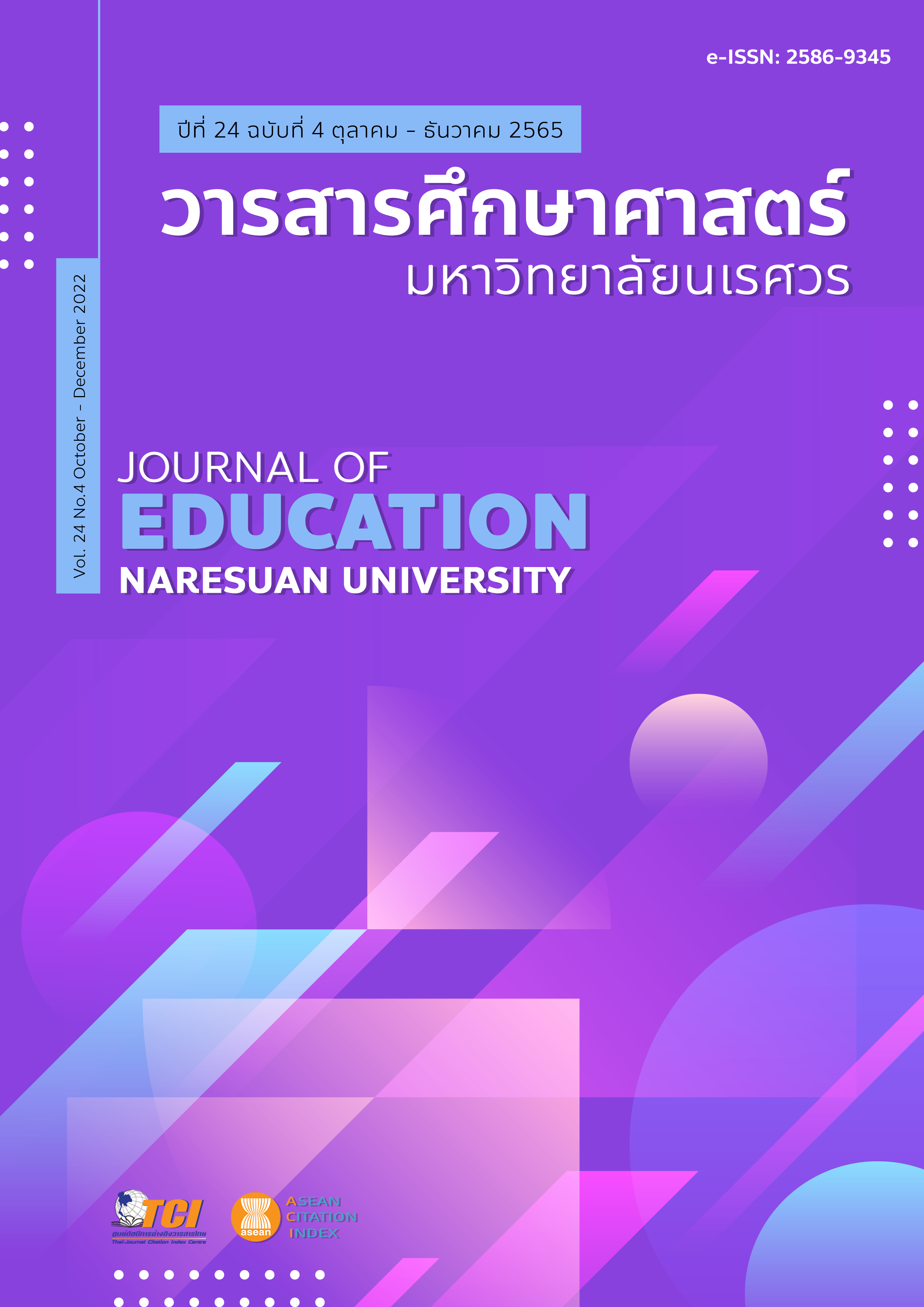QUALITY OF EDUCATIONAL INNOVATION: RECON-STRUCTURING CONCEPT คุณภาพของนวัตกรรมการศึกษา: การรื้อปรับโครงสร้างทางแนวคิด
Main Article Content
Abstract
The objectives of this article were 1) to express the ideas about the quality of educational innovation, 2) to indicate the systematic concepts and understandings toward efficiency and effectiveness of educational innovation, and 3) to apply the concepts of educational innovation development. The displayed data were collected from various literatures of the academic documents. The topics were related to the field of educational evaluation and measurement, educational research, social sciences, and behavioral sciences. Researcher expected this study to provide beneficial support for educational workers who interested in applying principles and ideas of educational innovation development to the future research in the field of educational innovation as well as the practical teaching and learning. In the early part of this paper, the information about the educational innovation’s quality is displayed. For the next topic, which is about the systematic concepts and understandings toward efficiency and effectiveness of educational innovation, this point is displayed in the middle part of the paper. The last part of this paper focuses on the applications of the concepts in qualitative measurement of educational innovation, in the practical ways.
Article Details

This work is licensed under a Creative Commons Attribution-NonCommercial-NoDerivatives 4.0 International License.
The owner of the article does not copy or violate any of its copyright. If any copyright infringement occurs or prosecution, in any case, the Editorial Board is not involved in all the rights to the owner of the article to be performed.
References
Brahmawong, C. (2013). Developmental testing of media and instructional package. Silpakorn Educational Research Journal, 5(1), 7 – 20. [in Thai]
Bertalanffy, L. V. (1984). General system theory foundations, development, applications. New York: Braziller Publishing.
Brookhart, S. M., & McMillan, J. H. (2019). Classroom assessment and educational measurement. New York: Routledge, Taylor and Francis Group.
Davier, A. A., Zhu, M., & Kyllonen, P. C. (2017). Innovative assessment of collaboration. New York: Springer International Publishing.
Devetak, I., Vogrinc, J. Z., & Khine, M. S. (2013). Critical analysis of science textbooks evaluating instructional effectiveness. New York: Springer Netherlands.
Edlund, J. E., & Nichols, A. L. (2019). Advanced research methods for the social and behavioral sciences. New York: Cambridge University Press.
Finch, H. W., & French, B. F. (2019). Educational and psychological measurement. New York: Routledge.
Fried, H. O., Lovell, C. A. K., & Schmidt, S. S. (2008). The measurement of productive efficiency and productivity growth. New York: Oxford University Press.
Fried, H. O., Schmidt, S. S., & Lovell, C. A. K. (1993). The Measurement of Productive Efficiency Techniques and Applications. New York: Oxford University Press.
Goodman, R. I., Fletcher, K. A., & Schneider, E. W. (1980). The effectiveness index as comparative measure in media product evaluation. Education technology, 20(9), 30 - 34.
Gravetter, F. J. (2018). Research methods for the behavioral sciences. Boston: Cengage Learning.
Gravetter, F. J., Wallnau, L. B., Forzano, L. B., & Witnauer, J. E. (2021). Essential statistics for the behavioral sciences (10th ed.). Boston: Cengage Learning.
Isaacs, T., Zara, C., Herbert, G., Coomes, S. J., & Smith, C. (2013). Key concepts in educational assessment. Los Angeles: Sage.
Keathley, J., Meggarrey, I., Merrill, P., Owens, T. L., & Posey, K. (2013). The executive guide to innovation turning good ideas into great results. Wisconsin: ASQ Quality Press.
Knowlton, L. W., & Phillips, C. C. (2012). The logic model guidebook better strategies for great results. New York: Sage Publications.
Liamputtong, P. (2019). Handbook of research methods in health social sciences. Singapore: Springer Singapore.
McLaughlin, J., & Jordan, B. (1999). Logic models: a tool for telling your program's performance story. Evaluation and Program Planning, 22(1), 65-72.
Merriam-Webster. (2021). Merriam-webster dictionary. New York: Merriam-Webster.
Mills, G. E., & Gay, L. R. (2018). Educational research competencies for analysis and applications (12th ed.). New York: Pearson.
Molle, W., & Djarova, J. (2009). Enhancing the effectiveness of innovation new roles for key players. New York: Edward Elgar Publishing.
Morley, D. A., & Jamil, M. G. (2021). Applied pedagogies for higher education real world learning and innovation across the curriculum. Cham, Switzerland: Springer International Publishing, Palgrave Macmillan.
Nitko, A. J., & Brookhart, S. (2013). Educational assessment of students. New York: Pearson International Publishing.
Porta, M. (2016). A dictionary of epidemiology (6th ed.). New York: Oxford University Press.
Silva, E., Stefanou, S. E., & Lansink, A. O. (2020). Dynamic efficiency and productivity measurement. New Yok: Oxford University Press.
Tabachnick, B. G., Fidell, L. S., & Ullman, J. B. (2018). Using multivariate statistics (7thed.). New York: Pearson International Publishing.
Taylor-Powell, E., Jones, L., & Henert, E. (2003). Enhancing program performance with logic models. Wisconsin: University of Wisconsin-Extension.
The US Food and Drug Administration. (2018). Clinical research phase studies in the drug development process. United State of America: FDA.
Wells, C. S., Faulkner-Bond, M., & Hambleton, E. (2016). Educational measurement from foundations to future. New York: The Guilford Press.
Zapata-Rivera, D. (2019). Score reporting research and applications. New York: Routledge, Taylor & Francis.


